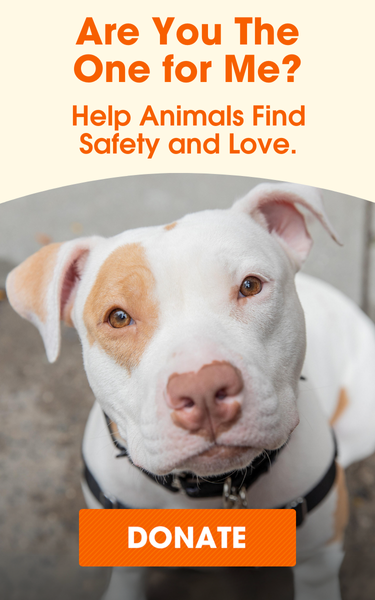
Rehabilitation Transforms a Once-Fearful Dog Into a Confident Companion

When Katie K. noticed a flyer in the breakroom at work about a dog named Bailee who was available for adoption, she was immediately intrigued.
Katie works for an Asheville company that provides contract cleaning services for the ASPCA Behavioral Rehabilitation Center (BRC), the first and only facility dedicated to providing behavioral rehabilitation for severely fearful dogs, such as those confiscated from puppy mills and hoarding situations.
Bailee, a mixed breed, is a former stray who was sent to the BRC because she was so fearful she was unable to interact with people.
“I lost my dog four years ago, and after seeing Bailee’s picture and learning more about her, I wanted to meet her,” says Katie. “I’ve never had a fearful dog, but I have trauma in my past, so I was drawn to her story.”

Bailee was found as a stray in rural Tennessee and dropped off at a county shelter. The staff there soon realized that her level of fear level would make her nearly impossible to place in a home and put her at risk for euthanasia.
“She had been running loose for a long time and continued to have puppies,” says Dr. Ashley Eisenback, Senior Director of Veterinary Services at the BRC and a volunteer at the shelter where Bailee ended up. “They would humanely trap and rehome the pups, but Bailee continued to evade traps. When she was finally caught, she tried repeatedly to escape. She huddled in the corner of her kennel and made no attempts to socialize with people, so we transferred her to the BRC for a second chance.”
From Fearful to Confident
At the BRC, Bailee went through various treatment protocols that reinforced positive experiences as she advanced through the program.
“Not surprisingly, her progress was slow,” says Kelly Kidd, the BRC’s Volunteer and Foster Manager. “Over time, she built strong relationships with familiar staff, though she took a while to build connections with new people.”

“One protocol that Bailee was particularly fond of was ‘Follow Me,’ where she learned to follow along beside or behind a person,” says Cecelia Erwin, a Behavior Specialist and part of the team working with Bailee while she was in treatment. “This protocol was particularly helpful in introducing Bailee to new people. Additionally, having new people present as she played with other dogs or experienced new things helped her learn to feel comfortable.”
Bailee learned to trust people, play with toys, make friends with other dogs, and enjoy car rides. She also loved playing in a wading pool. Her next step was a test drive in foster care to see how she coped in a home.
Over the course of her stay, Bailee had three fosters, including Cecelia, where she befriended Cecelia’s three dogs and five cats. Eventually, Bailee became a helper dog for new dogs entering the program, paying it forward with confidence and eventually graduating.

Cecelia helped market Bailee’s availability by creating flyers of Bailee to post around town. When Katie saw the flyers in the breakroom, she was hooked.
A Completely Different Dog
Katie contacted Cecelia to meet Bailee and take her home for a test run.
Katie’s roommate has a Border Collie named Riley, with whom Bailee quickly made friends. To her joy, Bailee soon discovered the kiddie pool for ducks and dogs on Katie’s property as well as a nearby pond.
Just after she finalized Bailee’s adoption, Katie adopted another dog from the BRC, a Husky mix named Oso. Oso served as a helper dog to Bailee as they both acclimated to their new home.

Today, Bailee is a completely different dog than when her journey began.
“She’s opened up and is a sweet 50-pound princess,” says Katie. “Her confidence has grown and she loves her toys. She also chases our chickens but doesn’t hurt them.”

As Katie recalls her personal story of trauma from last year — a domestic violence situation that led her to resign from a full-time job and start over — she says she is grateful to have found work, not to mention two new four-legged friends who have given her joy, devotion and friendship.
“Through working at ASPCA, I thought, ‘Maybe I could help a dog,’” she says. “And I also thought, ‘Maybe a dog could help me at the same time.’”

